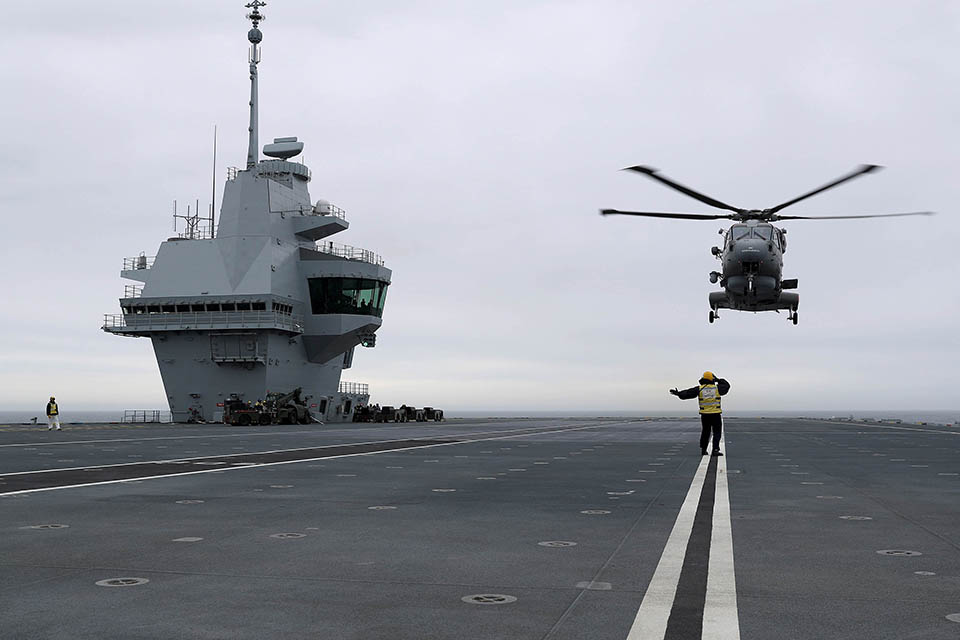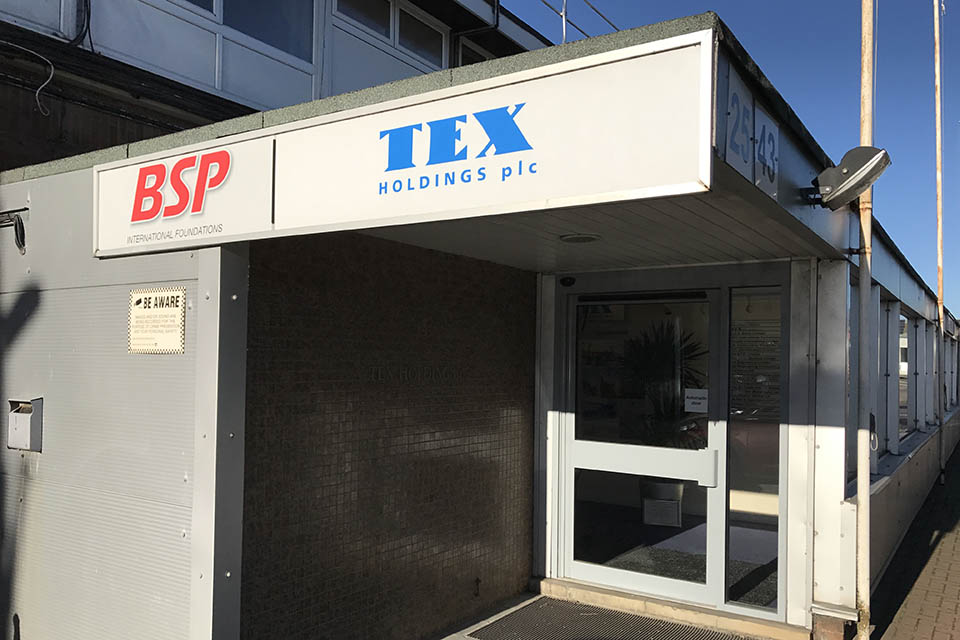The 2015 Strategic Defence and Security Review announced the procurement of 9 maritime patrol aircraft to re-introduce a capability that had been dormant since the withdrawal of the Royal Air Force’s (RAF) Nimrod MR2 in 2010. In July 2016 it was confirmed that the RAF would receive 9 Boeing P-8A Poseidon aircraft to meet this requirement.
The Poseidon is designed and built by the American aerospace company Boeing and can trace its’ heritage to the company’s 737 narrow body airliner. The Poseidon was developed to meet the requirements of a US Navy programme to replace the venerable Lockheed P-3 Orion maritime patrol aircraft and the aircraft has been substantially re-engineered from the civil airliner that many of us have flown on business or holidays. As well as the inclusion of a large suite of sensors and mission equipment to carry out the maritime patrol role; it also includes significant structural strengthening, additional fuel tanks, an internal weapons bay and enhanced electrical power generation.
The aircraft first flew in 2009 and entered US Navy operational service in 2014. It should be noted that whilst the Poseidon’s heritage is from the Boeing 737; the aircraft are designed, certified and built as military aircraft and are not civil airliners modified for a new role.
MOD Defence Equipment and Support (DE&S) are responsible for acquisition of the Poseidon aircraft, associated systems and support through a Foreign Military Sales contract with the US Department of Defense. Like all new United Kingdom (UK) military air systems the Poseidon must be certified by the Military Aviation Authority (MAA) before entering front line service. This certification activity is a process to demonstrate independently that the aircraft design complies with defined reference standards and can achieve an acceptable level of safety.
The certification process is an extremely extensive one that involves considerable interaction between the Type Airworthiness Authority (TAA), who is the senior engineer in the DE&S Delivery Team, and the Certification Division of the MAA. The process culminates in the issue of a Military Type Certificate (MTC) by the MAA and is detailed in RA 5810. This requirement for independent certification of new air systems by the MAA was a recommendation of the 2009 Haddon-Cave Report that led to the founding of the MAA.
A major element of the MAA 5 year strategy is engagement with other nation’s military aviation regulators.This includes a formal process of recognition and, where appropriate, harmonising our approach internationally. Poseidon was introduced into US Navy service under the auspices of their procurement organisation Naval Air Systems Command, known as NAVAIR. The aircraft certification process was carried out by the US Navy’s airworthiness regulator, the 4.0P division of NAVAIR. As part of the MAA’s mutual recognition programme, NAVAIR 4.0P were recognised in October 2014 as a regulator whose approach to airworthiness, certification and regulation are acceptable to the MAA. Once the decision to procure Poseidon was confirmed, it was decided that it would be logical to exploit the mutual recognition process and use NAVAIR 4.0P’s work on Poseidon as a key building block of the MAA’s certification of the aircraft.
Whilst NAVAIR 4.0P has been recognised by the MAA, as with any other military regulator, it is important to note that there are significant differences in their regulatory approach. These mean that exploiting their certification activity was not simply a matter of “rubber-stamping” the NAVAIR equivalent of a MTC. Rather the MAA has developed a structured approach to re-use existing certification evidence to cater for differences in UK regulations, together with any differences in the configuration and operation of the aircraft in RAF service compared with the US Navy. This approach is explained in greater detail in 2 MAA Regulatory Notices, MAA/RN/2016/11 and MAA/RN/2015/08, and the MAA decided that certification of Poseidon was a suitable opportunity to test its’ application.
The first step in the process is what is termed a Part A Review. This is essentially a feasibility study to carry out an assessment of the acceptability and applicability of the original certification activities, in this case by NAVAIR 4.0P. The review also takes into account how the aircraft will be used in service by the RAF and the impact of any configuration differences between the UK and US Navy variants of Poseidon. During the Part A review it was confirmed that the Poseidon had been certified by NAVAIR to the processes that had been reviewed by the MAA during the recognition activity in 2014. However, it should be noted that many military airworthiness regulators have, like the MAA, been created in their current form only in the last decade and have evolved practice from there. Therefore, exploiting the mutual recognition route would probably not be feasible if the UK purchases an aircraft that has already been in service for a lengthy period, as it would have likely been certified to a different process to the one that has been recognised.
The Part A report was carried out by the TAA, and reviewed by MAA Certification Division, prior to the project’s Main Gate review which took place in June 2016. Over the past 12 months the focus of the certification activities has been the compilation of a follow-on Part B report by the TAA. The Part B report is to address issues highlighted during the Part A Review and carry out a number of case studies into the certification work originally carried out by NAVAIR. The latter focuses on the areas: where US regulations and standards differ from those of the UK; that present the highest potential airworthiness risk and those where the Poseidon design includes novel or unusual features. Therefore, for example, there have been extensive Part B case studies into the major re-design of the aircraft’s lower fuselage to include an internal weapons bay and auxiliary fuel tanks. The overall aim of the Part B report is to determine the extent of any further certification activity required to be carried out prior to the Poseidon entering RAF Service in 2019.
The Part B report has recently been submitted by the TAA to the MAA. A review period is required to allow the MAA Technical Director to formally comment on the issues raised in the report. However, the DE&S Delivery Team have been in regular dialogue with staff from MAA Certification Division to highlight issues as they develop and to seek guidance on this novel approach to certification of a UK military aircraft. The 2 teams have worked closely together to efficiently deliver a certification programme, whilst ensuring that there is clear delineation between the respective roles of DE&S as the delivery organization and the MAA as the Air Safety Regulator.
Once the MAA review of the report is completed the TAA will have to address the findings in a similar vein to the Part A report. In addition, the work to date for both the Part A and Part B reviews has been against the data from the US Navy’s Lot 4 build standard. The first aircraft to be delivered to the RAF will be part of the US Navy’s Lot 8 production buy. Therefore, as part of the programme of certification work following the Part B report, the TAA will have to assess the differences between the Lot 4 and Lot 8 configurations and provide appropriate certification evidence to the MAA. These various work strands will culminate in the TAA submitting a final certification evidence submission to the MAA in late 2018 followed by the issue of a Military Type Certificate in early 2019, prior to the first RAF Poseidon entering service later in that year.
The procurement of the Poseidon was one of the major decisions of the 2015 Strategic Defence and Security Review and the aircraft will be in front-line service under 5 years from the announcement. This is a demanding timeline, and in order to achieve this the MAA has developed an innovative approach to aircraft certification, which has leveraged its mutual recognition initiative with its’ sister military aviation regulators. Many of the aircraft types planned to enter service with the UK military in future, have already seen service with other military or civilian operators. Therefore, the MAA intends to capitalise on this and, wherever feasible, use the mutual recognition approach in order to ensure that this key air safety requirement can be met in the most efficient and timely manner possible.


